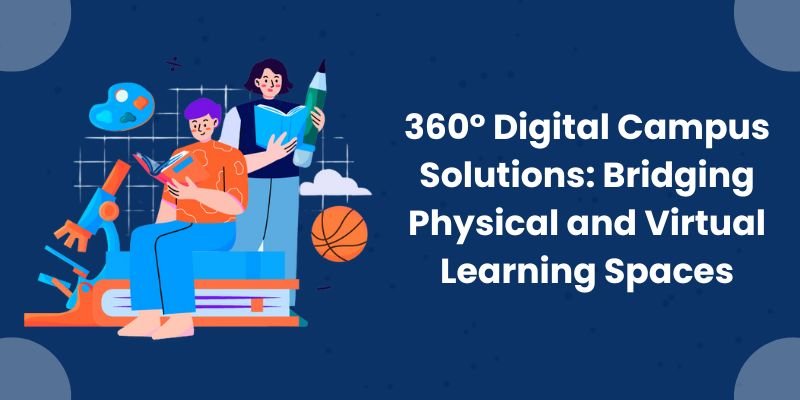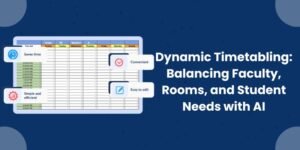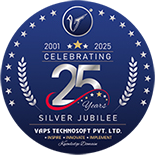In today’s fast-evolving academic landscape, universities and higher education institutions are rethinking the way they deliver learning experiences. Traditional classroom setups are giving way to hybrid environments that combine physical spaces with virtual platforms. At the heart of this transformation lies the concept of a 360° digital campus—an integrated system that connects students, faculty, infrastructure, and academic content through smart technologies. These digital campus solutions are not just about convenience; they’re redefining the future of education.
The Need for Digital Transformation in Education
Responding to Shifting Student Expectations
Modern students, born into a world of smartphones, cloud storage, and instant messaging, expect their educational institutions to be equally responsive and tech-savvy. They want seamless access to learning materials, virtual support, and the ability to collaborate without physical barriers. A 360° digital campus enables institutions to meet these expectations by offering a unified digital environment where learning, administration, and community engagement converge.
Lessons from the Pandemic
The COVID-19 pandemic accelerated the adoption of remote learning tools. However, many institutions were caught off guard by the lack of integrated systems. This experience highlighted the importance of robust digital infrastructures that not only support online classes but also manage assignments, attendance, assessments, and student services in one ecosystem. A holistic digital campus addresses these gaps and future-proofs educational delivery.
Core Components of a 360° Digital Campus
1. Unified Learning Management Systems (LMS)
A foundational layer of any digital campus is the LMS. It centralizes course materials, assessments, forums, and grading. With features like automated reminders, feedback loops, and real-time progress tracking, the LMS helps both faculty and students stay aligned. Integration with external content providers and video conferencing tools enhances its utility.
2. Virtual Classrooms and Lecture Capture
Through platforms like Zoom, MS Teams, or proprietary tools, virtual classrooms enable live and recorded sessions. Lecture capture technologies allow students to revisit lessons at their convenience, promoting better retention and accessibility. This is particularly useful for students with differing schedules or those who learn at their own pace.
3. Smart Scheduling and Calendar Integration
Digital campus solutions automate timetabling, exam scheduling, and room bookings. Students receive personalized calendars updated in real-time, reducing confusion and overlaps. These calendars sync with mobile devices, ensuring that everyone stays informed of changes or upcoming deadlines.
4. Digital Resource Access
Libraries have transformed into digital knowledge hubs. Students can now access e-books, journals, and archived materials with a click. QR codes on physical resources can link to digital copies, metadata, or tutorials, enriching the research experience.
5. Student Information Systems (SIS)
The SIS acts as a centralized repository for academic records, grades, attendance, and financial data. It enables students to view their progress and administrators to track performance trends and streamline interventions. Automated notifications alert students to upcoming tuition deadlines or eligibility for scholarships.
Blending Physical and Digital Infrastructure
Smart Classrooms
Smart classrooms equipped with interactive whiteboards, projectors, voice-activated assistants, and IoT sensors create immersive learning environments. AI-driven analytics from classroom activity can help improve instructional strategies and identify struggling students early.
Campus Navigation and Augmented Reality (AR)
AR-enhanced campus maps assist new students in navigating large university grounds. With just a phone scan, users can receive real-time directions, building details, or schedules. This enhances orientation experiences and improves accessibility.
IoT-Powered Utilities
Sensors that monitor temperature, lighting, and occupancy are part of a smart campus’s physical infrastructure. These tools optimize energy usage, schedule maintenance, and ensure safety. Students benefit from comfortable, responsive environments.
Enhancing Administrative Efficiency
Automation of Processes
Digital workflows replace manual paperwork. From admissions to graduation, forms can be submitted, processed, and tracked online. Institutions save time, reduce errors, and improve the student experience. Financial aid processing, internship applications, and transcript requests all become more efficient.
Data Analytics for Decision Making
Dashboards consolidate data from various systems to help administrators make informed decisions. Predictive analytics can forecast enrollment trends, detect dropout risks, or identify departments needing intervention. Real-time insights lead to proactive responses.
Multi-Channel Communication
A 360° digital campus fosters consistent communication through emails, mobile apps, SMS alerts, and internal portals. Students never miss important updates, while faculty and staff can coordinate efforts more effectively.
Student-Centered Services
Virtual Help Desks and Chatbots
AI-powered chatbots provide 24/7 assistance on everything from course selection to fee payments. Virtual help desks support ticketing systems to resolve complex queries. This improves service quality and reduces administrative burden.
Personalized Learning Paths
AI algorithms analyze learning patterns to suggest content, recommend courses, or highlight weak areas. This level of personalization empowers students to take control of their learning journeys and reach their academic goals faster.
Mobile-First Experience
Every feature of the digital campus is optimized for mobile use. Whether it’s attending class, checking grades, or submitting assignments, students can stay engaged on the go.
While many institutions use different apps for LMS, attendance, and scheduling, a full-scale campus solution brings these under one umbrella. The result is a smoother user experience, less redundancy, and more actionable data.
Without promoting any single provider, universities can evaluate platforms that offer these comprehensive services—including secure access, analytics dashboards, and mobile integration—to future-proof their digital strategy.
Security and Compliance
Protecting Student Data
A digital campus must prioritize cybersecurity. Encrypted databases, multi-factor authentication, and secure cloud storage ensure that student records remain protected. Compliance with local data privacy laws (like GDPR or India’s DPDP Act) is critical.
Role-Based Access Controls
Only authorized users should access specific data. Faculty may view academic records, while financial officers see payment details. This prevents data leaks and ensures operational integrity.
Bridging Equity Gaps
Device Lending Programs
To ensure inclusive access, institutions can launch initiatives that lend laptops, tablets, or internet dongles to students in need. This helps close the digital divide.
Hybrid Participation Options
Students unable to attend physically can join virtually through live streams or asynchronous content. Blending both methods ensures flexibility and accessibility for all.
Future Innovations in Digital Campus Solutions
Blockchain for Academic Records
Blockchain technology can secure transcripts, diplomas, and certifications. These records are tamper-proof, instantly verifiable, and reduce administrative overhead.
AI for Predictive Retention
AI systems can analyze data to identify at-risk students and recommend targeted interventions—academic counseling, tutoring, or mentorship—improving retention rates.
Virtual Reality (VR) Learning Labs
With VR, students can explore 3D models, simulate experiments, or practice surgical procedures in a safe digital environment. This brings hands-on learning to even the most remote students.
Interconnected Ecosystems
Future digital campuses may integrate external services like job boards, health clinics, and e-commerce into their portals. One login, total access—a truly interconnected academic lifestyle.
A 360° digital campus is more than a trend—it’s a transformative movement toward smarter, more connected, and more equitable education. By harmonizing physical infrastructure with digital innovation, universities can create adaptive, student-centered learning environments that prepare learners for the complexities of the modern world.
The institutions that embrace this holistic model will not only stay relevant but lead the charge into the next generation of education delivery. From AI to AR, mobile access to blockchain security, the possibilities are endless—and the journey has only just begun.












